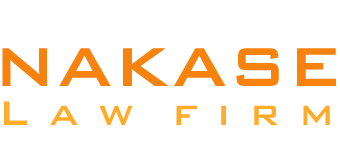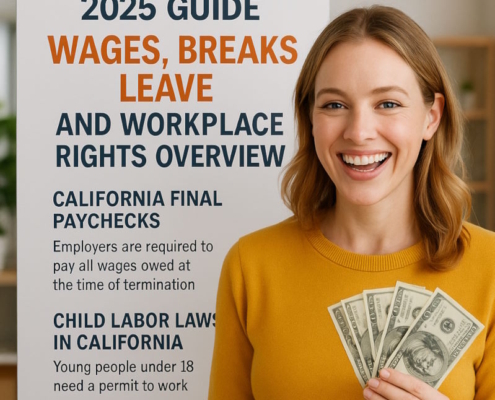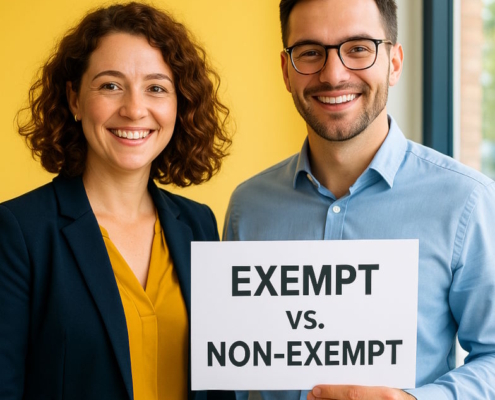What is medical leave under FMLA?
When it comes to employee rights and the ability to balance work and personal life, FMLA is among the most significant laws in the nation, most notably in California. During times of personal or family health crises, employees have access to FMLA, a safety net that helps them maintain a work-life balance. When people take unpaid, job-protected leave, they can’t lose their jobs or health insurance.
Along with FMLA, there is the Family Rights Act (CFRA). To better suit the needs and circumstances of Californians, CFRA modifies FMLA provisions. Taken together, these laws establish guidelines that recognize and encourage workers to put their health before employment.
The Family and Medical Leave Act (FMLA) is an important part of worker rights and job flexibility in the United States. Enacted in 1993, FMLA helps workers manage work and personal health demands while also protecting families’ financial stability in times of medical emergencies or other big life events.
Up to twelve weeks of unpaid leave per year is available to employees who qualify for the Family and Medical Leave Act (FMLA). Several medical and family-related events qualify employees for this leave, such as the birth or adoption of a child, the care of a family member with a critical illness, or the employee’s own serious health condition.
In certain cases, the Family and Medical Leave Act (FMLA) allows for up to 26 weeks of leave within a 12-month period for the care of a covered service member.
Things Needed to Qualify for FMLA in California
There are strict requirements for who can use the Family and Medical Leave Act (FMLA), and both employers and workers need to be aware of them. Employers can ensure that individuals in need receive FMLA benefits in a fair and manageable manner by using these criteria.
How long you’ve been in your present job is a major factor in determining if you’re eligible for family leave under the Family and Medical Leave Act (FMLA). A minimum of twelve months of continuous service is required of all employees. These 12 months don’t have to be in a row, though. Thus, prior stints working for the same company could be eligible for credit toward the 12-month minimum, so long as the gap between jobs is less than seven years.
Working hours are an important consideration with length of employment. An employee is required to have worked a minimum of 1,250 hours in the twelve months prior to the start of their FMLA leave. Over the course of a year, this demand amounts to little more than 24 hours of work each week. This hour threshold highlights the FMLA’s inclusive approach, making part-time workers eligible on par with full-time employees.
The Family and Medical Leave Act (FMLA) is applicable to any company with fifty or more employees, as well as any public or private elementary or secondary school. All of these workers have to be located within 75 miles of the office. Because of this requirement, the FMLA is able to cover a large percentage of workers while still taking into account the needs of smaller enterprises.
In addition to these federal standards, the California Family Rights Act (CFRA) supplements the Family and Medical Leave Act (FMLA) with certain state-specific safeguards and regulations.
The FMLA and the CFRA’s Crucial Provisions
Laws like the Family and Medical Leave Act (FMLA) and the California Family Rights Act (CFRA) aim to protect workers’ basic rights across the country, but notably in California. Here are the main points to keep in mind if you want to know how these acts work and how they help workers:
The amount of time an employee can take from work due to an approved family leave or medical leave agreement is one of the most important aspects of these laws. A maximum of twelve workweeks of unpaid leave per calendar year are available to eligible employees. Employees will have enough time off to deal with major health issues, care for a family member who is seriously ill, bond with a child, or deal with emergencies relating to a family member’s military service.
The Family and Medical Leave Act (FMLA) establishes a unique right to time off for families of active-duty military personnel. In order to care for a covered serviceman who has a serious accident or sickness, eligible personnel can take up to 26 workweeks of leave in a single 12-month period. Military families endure special hardships and sacrifices, and this extended leave is a way to show them that you care.
The FMLA and CFRA both provide protection of employment as a fundamental provision. There is a legal requirement that an employee who takes time off under the Family and Medical Leave Act or the Children’s Fair Labor Standards Act be immediately and fully reinstated to the same or a comparable position when they return to work. This safeguard is vital because it prevents workers from having to compromise either their health or the health of their families in order to keep their jobs. The employee’s group health insurance will likewise remain in effect during this time, just as it would have been in the absence of the leave.
These protections ensure that workers may focus on both their careers and their families without sacrificing either. The Family and Medical Leave Act (FMLA) and the Civil Rights Act (CRSA) provide job security and time off to assist create a more compassionate and supportive workplace in California and throughout the nation.
Reasons for Taking FMLA Time Off in California
Eligible workers can take time off for a variety of important life events and medical reasons according to the Family and Medical Leave Act (FMLA). If workers want to make the most of their FMLA rights, they need to know why these protections exist. Reasons to use Family and Medical Leave Act (FMLA) leave include:
The Family and Medical Leave Act (FMLA) allows employees to take time off work to care for a new child who is born to them or who is less than one year old. It also covers the first year following a child’s placement with the employee, whether through adoption or foster care.
Workers are eligible to take Family and Medical Leave Act (FMLA) leaves if they are unable to work because of their pregnancy or if they need to get medical treatment while they are pregnant. This also covers the time you’ll be unable to work after giving birth and while you’re healing.
Employees are eligible for Family and Medical Leave Act (FMLA) leave in order to care for a parent, spouse, or kid who is suffering from a serious illness. This is a lifesaver for workers who, in times of crisis, must tend to the basic needs of their families.
When an employee is unable to work as a result of their own serious health condition, they are eligible to seek FMLA absence. This way, workers won’t have to worry about their jobs while they get well.
Family and Military Leave Act (FMLA) leave is available to employees whose family members are serving in the military, in the event of an emergency. Some examples of such emergencies include going to a military ceremony, finding a new daycare, dealing with legal and financial matters, or visiting a service member on temporary rest and recuperation leave while they are away on deployment.
Requesting FMLA Leave in California: How to Apply
There is a procedure that both the employer and employee must adhere to in order to submit a request for leave under the FMLA. If you want everything to go smoothly and legally, you need to know this procedure inside and out. Key steps in applying for Family and Medical Leave Act (FMLA) leave are as follows:
1. Giving Notice
When an employee needs Family and Medical Leave Act (FMLA) leave, the first thing they should do is tell their company.
Workers are required to give 30 days’ notice when their absence is foreseeable, including when they are expecting a child or are planning medical treatment. The employee is required to notify their employer as quickly as possible, usually the same or following business day, if the leave is unexpected.
2. Reply from the Employer
A response from the employer is required within five business days of receiving a leave request. The reply has to cover the employee’s eligibility for FMLA leave as well as any other necessary details, such a medical certification.
3. Supplying Records
The employee may be required to present supporting documentation in order to request FMLA leave, depending on the cause for the leave.
A doctor’s note or other official medical certification may be required for leaves of absence due to serious illness. The minimum amount of time an employer must give an employee to provide necessary paperwork is fifteen calendar days.
4. Decision by the Employer
After the employee submits the required paperwork, the employer is required to notify them if the leave qualifies as FMLA leave. You should put this notice in writing and include information like how much time off counts toward the employee’s Family and Medical Leave Act (FMLA) benefit.
5. Taking the Time Off
Employees are able to begin their FMLA leave after they have received approval. With the employer’s consent, FMLA leave might be continuous, sporadic, or on a reduced schedule.
6. Keeping Benefits
A worker’s employment and health insurance coverage are safeguarded while they are out on FMLA leave. The employee’s health coverage is required to be maintained by the employer in the same manner as if the employee had remained in the office.
7. Return
Workers usually get to go back to their old jobs or similar ones with the same perks, wages, and other work conditions when their FMLA leave ends. When an employee takes time off due to a significant health issue, their employer may ask for proof that they are fit to work.
8. Communication
Both the employee and the employer must maintain open lines of communication throughout the Family and Medical Leave Act (FMLA) leave process. Employers should make any necessary adjustments or updates to policy known, and workers should keep their employers informed of their progress and when they plan to return to work.
In order to support employees during vital periods and ensure compliance with the law, it is important to understand and follow these measures while handling FMLA leave. This will also help businesses maintain clear and fair standards.
Understanding Your FMLA Rights in California
It is critical for employees to grasp the many rights and protections provided by the Family and Medical Leave Act (FMLA). Workers should be able to take time off without worrying about their jobs or health insurance thanks to these safeguards. The Family and Medical Leave Act primarily protects the following:
1. Keeping Your Job While You’re Out on FMLA
Job security is one of the most important safeguards provided by the FMLA. If an employee takes family and medical leave (FMLA), their employer must either return them to their previous position or find them a comparable one with the same or better compensation, perks, and working conditions.
If an employee takes Family and Medical Leave Act (FMLA) leave, their employer cannot fire them, reduce their compensation, demote them, or revoke any other benefits they may have.
The Family and Medical Leave Act also shields workers from employer retaliation in the event that they use their FMLA rights and privileges. Taking Family and Medical Leave Act (FMLA) leave is protected from termination, disciplinary action, and discrimination.
2. Ensuring Health Insurance Coverage While Absent
The terms of an employee’s group health insurance coverage must remain unchanged while they are out on FMLA leave, just as they would have been had the individual continued to work. If the employee received health insurance through their company before taking leave, they can keep it during their FMLA absence. Contributions to health insurance premiums, as is customary, are the employee’s responsibility. While the employee is on leave, it may be necessary to make arrangements for the deduction of their premium share to continue from their paycheck.
3. Preserving Employee Benefits
A worker’s health insurance, disability benefits, paid time off, yearly leave, and pension or retirement plans must continue uninterrupted while they are out on FMLA leave. Having said that, the FMLA does not mandate that employers permit seniority or additional benefits to accrue while an employee is on leave.
The FMLA and the Role of California Businesses
Employers have a lot on their plates under the Family and Medical Leave Act (FMLA), which mandates strict compliance with federal and state requirements through the implementation of established policies and processes. In order to manage FMLA leave requests properly and keep a legal and supportive workplace, employers must understand these duties. Important parts of the employer’s FMLA responsibility include:
1. Addressing Family and Medical Leave Act Requests
The FMLA protects employees’ right to reasonable family and medical leave, and it is the employer’s responsibility to determine whether a leave request meets the criteria and to advise the employee of those rights. Notifying workers of their eligibility for Family and Medical Leave Act (FMLA) leave and responding to their leave requests in a timely manner (usually within five business days) are part of this.
2. Giving the Required Notices
Your company is required by law to post a notice informing employees of your policy on family and medical leave act (FMLA) and providing information on how to submit a complaint. Everyone who applies for a job or works there should be able to view this poster, so put it somewhere visible.
Further, before an employee may take FMLA leave, their employer must give them written notice outlining the specifics of the absence, including whether or not a medical certification is necessary and the repercussions for not having one.
3. Continued Access to Health Benefits
Even when an employee is out on FMLA leave, their group health insurance coverage must continue in the same manner as before the leave. It is the employer’s responsibility to restore the employee’s benefits when they return from FMLA absence.
4. Restoring Jobs
Employers are required to reinstate employees to their original or nearly similar positions upon their return from family and medical leave under the Family and Medical Leave Act (FMLA).
5. Maintaining Records
When an employee takes Family and Medical Leave Act (FMLA) leave, their employer is required to preserve detailed records of the leave, including the dates of the leave, any disagreements over whether the absence was actually FMLA leave, and copies of any notices that were sent to the employee.
6. Adherence to Local, State, and Federal Regulations
Businesses need to follow not only the Family and Medical Leave Act (FMLA) rules set out by the federal government, but also any state laws, like the California Family Rights Act (CFRA), that may require more safeguards or criteria. One aspect of this is being familiar with the intricacies of both federal and state regulations so that you may provide your employee with the most generous provisions.
Various Resources Regarding the California Family and Medical Leave Act
Learning your rights and obligations under the FMLA (Family and Medical Leave Act) can be a challenging process. The good news is that both employees and employers can take advantage of a number of helpful tools. Additional resources and help are available at the following locations:
U.S. Department of Labor (DOL)
The FMLA is overseen and enforced by the DOL’s Wage and Hour Division for the majority of employees. You will find data sheets, frequently asked questions, and thorough guides concerning Family and Medical Leave Act (FMLA) on their website.
California Department of Fair Employment and Housing (DFEH)
Residents of California can find a wealth of information about the California Family Rights Act (CFRA), which is similar to the Family and Medical Leave Act (FMLA), at the DFEH. Links to frequently asked questions (FAQs), guidelines, and other materials pertaining to California legislation are available on the DFEH website.
Resources from Employers
Human resources departments are a common source of information and resources about FMLA from employers. They can give you the forms you need, explain the policies of the company, and help you with the application process.
Advice from Lawyers
If you need legal guidance or think your FMLA rights have been infringed, it may be wise to see a labor law professional.
There are legal aid organizations in several states, and the American Bar Association also provides a service to find lawyers.
Helping Hands for Workers (EAPs)
Employee assistance programs (EAPs) are available through many different types of businesses and give confidential help with things like FMLA leave as well as other issues.
Frequently Asked Questions about California FMLA Leave
Although the Family and Medical Leave Act (FMLA) is an important statute for workers, there are a lot of unanswered issues and misconceptions about it. All parties involved, including employees and employers, must work to clear up these misconceptions in order to make proper and efficient use of the FMLA. Frequently asked concerns and misconceptions regarding Family and Medical Leave Act leave include as follows:
- Does California provide paid or unpaid FMLA leave?
Many people have the false impression that Family and Medical Leave Act (FMLA) leave is like paid vacation. The FMLA actually offers unpaid leave. The use of accrued paid leave, such as vacation or sick leave, to cover part or all of the FMLA leave term is an option that employees have or that employers mandate. Along with Family and Medical Leave Act (FMLA) leave, certain states or companies may have their own paid leave policies or programs.
- Is FMLA Required of All California Employers?
Many people also wrongly believe that all employers are required to comply with FMLA. Indeed, FMLA is applicable to all levels of government, including federal, state, and local organizations, as well as private companies with fifty or more workers. These workers have to have jobs 75 miles or less from the work location.
- In California, is it possible to take FMLA leave intermittently?
There are several situations in which employees may be able to take FMLA leave on an as-needed or modified schedule, although many workers aren’t aware of this. This is especially important when dealing with employees who are undergoing long-term medical treatments or who have a significant health condition that necessitates regular care for themselves or their families.
- Do All California Workers Qualify for Family and Medical Leave Act (FMLA)?
The Family and Medical Leave Act does not apply to every employee. Workers who have been with the same company for a year or more, put in a minimum of 1,250 hours of service in that time, and are located within 75 miles of a firm with 50 or more employees are all qualified to take advantage of this benefit.
- Do California Employee Benefits Change When an Employee Uses FMLA Leave?
It’s commonly believed that employees will lose their benefits if they take Family and Medical Leave Act (FMLA) leave. Even though FMLA leave is unpaid, employers are nonetheless required to keep employees’ health coverage in the same manner as when they were working. While you’re out on FMLA leave, you might not be able to keep accruing other benefits like seniority or paid leave.
- Does California law allow employers to deny FMLA leave?
Assuming both the employee and the leave meet the requirements of the FMLA, employers are unable to deny the employee FMLA leave. Nonetheless, businesses have the right to ask for proof of need, like a doctor’s note, in order to provide leave.
- Does FMLA in California Cover All Medical Conditions?
Family and Medical Leave Act (FMLA) leave isn’t always an option. Any mental or physical illness that necessitates inpatient treatment or ongoing monitoring by a healthcare professional is considered a serious health condition for the purposes of the Family and Medical Leave Act (FMLA).































